Eating alone, once considered an oddity, has become commonplace for many across the Western world. Fast food chains are promoting eating on the go or “al desko”. Why waste time in your busy day sitting down at a table with others?
Surveys indicate that a third of Britons regularly eat on their own. Open Table, an online restaurant booking app, found that solo dining in New York increased by 80% between 2014-2018. And in Japan, the world capital of solo dining, a trend for “low-interaction dining” has taken off. Restaurants are opening which facilitate the ultimate solo dining experience: passing bowls of noodles through black curtains into individual booths.
Is this a worrying trend? We think so. Research is revealing the negative impacts of eating alone, which has been found to be linked to a variety of mental and physical health conditions, from depression and diabetes to high blood pressure. So it’s cheering that hundreds of food sharing initiatives have sprung up around the world which aim to improve food security and sustainability while combating loneliness.
There’s London’s Casserole Club, for example, whose volunteers share extra portions of home-cooked food with people in their area who aren’t always able to cook for themselves. Or South Africa’s Food Jams, social gatherings in which participants are paired up, preferably with strangers, and given a portion of the meal to prepare. Such initiatives offer lessons of all kinds to those thinking about how our food systems need to change. This is why we have been researching them, in our several ways, for the last few years.
So why has eating together declined? There are a variety of reasons. Authors such as the food writer Michael Pollan argue that it is due to the general undervaluing of home-based labour, including cooking. The widening of the workforce, which brought many women out of the kitchen and into the workplace during the 20th century, also contributed.
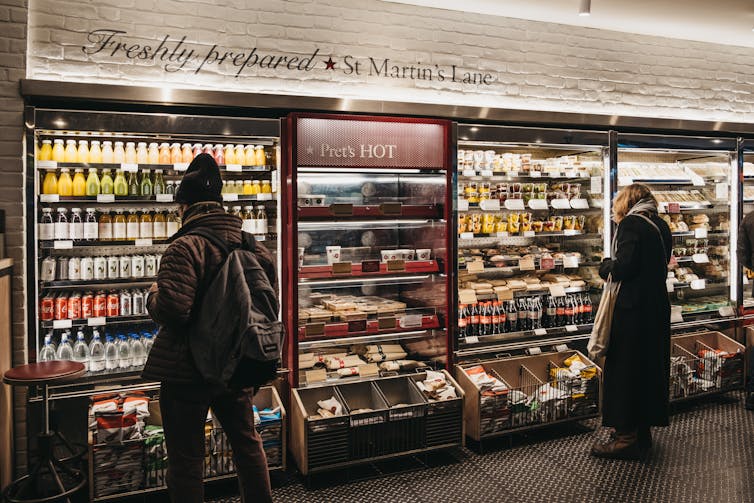
Meanwhile, the growth in insecure and inconsistent working patterns among a growing proportion of the population also discourages meals eaten communally. And an increasing number of people live alone, which certainly does not help. Reports of increasing feelings of loneliness are widespread.
The variety of people’s social circles is also decreasing. Declines in volunteering, political participation (beyond voting), fewer people giving to charity and less time spent informally socialising are all symptoms of this.
All this is capitalised upon by the food industry. Solo dining suits commercial interests across the food system, with the rising giants of the food industry keen to communicate a convenience culture around food – eat when you want, wherever you are.

This article is part of Conversation Insights
The Insights team generates long-form journalism derived from interdisciplinary research. The team is working with academics from different backgrounds who have been engaged in projects aimed at tackling societal and scientific challenges.
Food is big business
This should be no surprise. As new research shows, power and control over food globally has become so highly concentrated that large, profit-oriented multinationals are influential in shaping critical decisions about how our food is produced, traded and marketed. Some consider such global agri-food businesses to be necessary, viewing the increase in food production and distribution that they have generated as a prerequisite for global food security. Many others – us included – point out that this production-focused approach has led to negative effects on people’s livelihoods, cultures and environments.
It is undeniable that the global food system that has been created over the past half century is unsustainable. The increasing incidence of monocultures – huge swaths of a single crop grown over enormous areas – are heavily dependent on synthetic fertilisers, pesticides and antibiotics.
These in turn lead to biodiversity loss, environmental pollution and increasing fossil fuel dependency – synthetic fertilisers often require significant fossil fuel inputs (primarily natural gas). Around one-third of food produced is lost or wasted across the system and yet still billions of people globally go hungry every day.
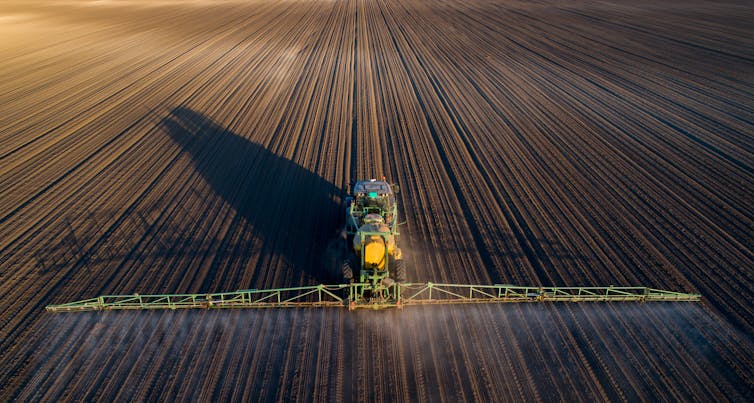
So it is certain that food systems need to be reconfigured to meet many of the UN’s global 2030 Sustainable Development Goals. But achieving these goals will not be easy. People are increasingly disconnected from the food system, with an ever-shrinking number of people involved in food production. As the then UN Special Rapporteur on the Right to Food, Olivier De Schutter, argued back in 2014, one of the greatest challenges to creating a more sustainable and inclusive food system is how to ensure people are able to participate actively in it.
But what would a more democratic and sustainable food future look like? By discussing this with a range of stakeholders, we developed three scenarios for sustainable food systems: technological, community-based, and educated.
The technological scenario puts “smart eating” at its centre. Fridges might monitor the food that is contained within them and provide recipes for using food that is close to use-by dates to avoid unnecessary waste. High levels of socio-cultural change, meanwhile, are envisaged under the “community eating” scenario, which champions greater opportunities and spaces for communal lifestyles. In this scenario, grow groups (basically technology-enabled community gardens) become mainstream activities, available to everyone. Meanwhile, the “educated eating” scenario, which puts high levels of regulatory innovation at its core, envisages advances in carbon accounting of food products and individualised carbon credit budgets.
The ideal food system would of course incorporate elements of all three of these visions. But above all – and in all three scenarios – it was stressed that a sustainable food future should be replete with opportunities to share food with others.
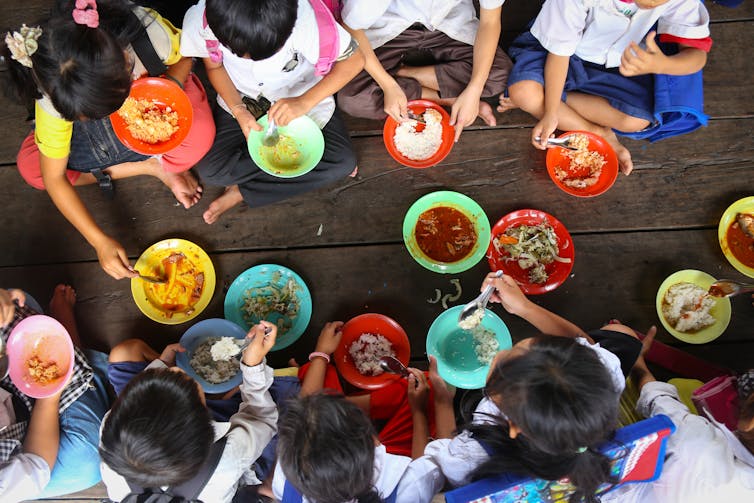
Food sharing
The seeds for such a world already exist. Our research into food sharing initiatives over the past four years has demonstrated that reinvigorating opportunities to share food – whether that is eating, growing or redistributing food together with others – can support greater food democracy as well as sustainability. So how do we get there?
People often blame modern technologies – smartphones, apps, web platforms and the like – for disconnecting us from each other and creating a world in which solo dining becomes commonplace. Smartphones mean we live in an “always on” culture. Fast food of any description is waiting to be delivered straight to our desk, with no need to leave home or the office. Meanwhile, apps allow us to connect seamlessly with people halfway round the world at the expense of those next to us on the bus or in a restaurant.
But the internet also provides many opportunities to reconnect over food. Whether it is identifying opportunities to grow together via interactive maps of community gardens, or discovering the location of social dining experiences in your neighbourhood, thousands of grassroots and community-led initiatives use food as the catalyst to bring people and communities together. These initiatives are often local, small-scale and run by volunteers – but their online presence means we were able to locate them in all four corners of the world.
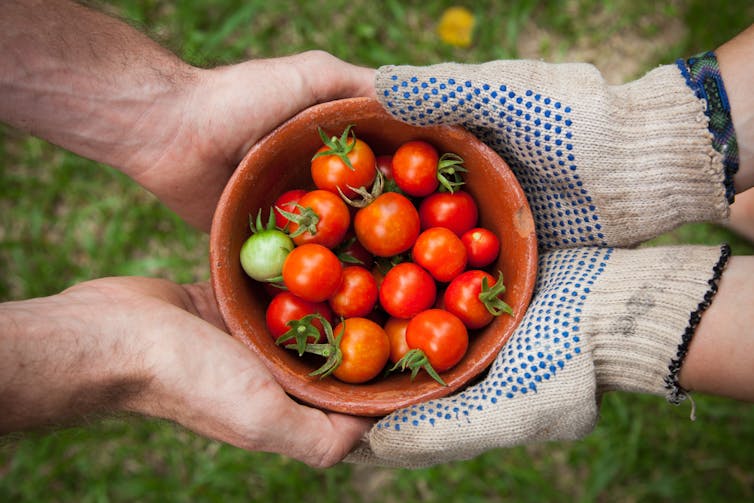
We systematically mapped these food sharing initiatives in 100 cities developing an online interactive tool to explore why, what and how food is shared. We prepared detailed sharing profiles for cities including Dublin, Berlin, London, Melbourne and Singapore. This was no easy process given the diversity of people and places covered, but it gives important visibility to activities that easily fall below the radar of politicians and the media.
We found that different sharing initiatives occur at all stages of the food chain – from growing food, to preparing and eating it, to distribution of waste.
Growing together
There are thousands of food sharing initiatives that focus on providing opportunities to grow food together. These often build on a long cultural tradition of food cultivation that is evolving and embracing new technologies to facilitate shared growing activities.

Such initiatives are immensely valuable. Growing with and alongside others provides a way to combat loneliness and opportunities to spend time in nature without spending money. It also provides a range of health and well-being benefits, reducing stress, heart rate and blood pressure. Recent research has uncovered that spending only two hours in nature each week can have the same health benefits as five portions of fruit and vegetables a day or 150 minutes of exercise.
Despite this, urban green spaces are becoming increasingly rare and food growing initiatives often operate under threat of eviction on temporary “meanwhile” leases. Governments should therefore look to shared growing initiatives for inspiration when considering future policies.
Himmelbeet, for example, is an intercultural community garden in the district of Wedding in Berlin. The goals of the initiative are to to enable access to healthy food and education, providing “the good life for all”. Founded in 2013, it is currently located on vacant space in one of Berlin’s most disadvantaged neighbourhoods. The initiative offers opportunities to grow food as well as providing cooking workshops, a monthly open-air movie screening, repair cafes, swap shops and much more.
Everything in the garden is developed in a collaborative manner with many volunteers working together to facilitate learning and give room for friendships to develop. One of Himmelbeet’s current projects is the development of a book on gardening that is accessible to everyone, with a diverse group working together to develop the content to ensure it meets this goal. Himmelbeet promotes its shared growing activities via social media and actively campaigns for more transparent land use planning in the city.
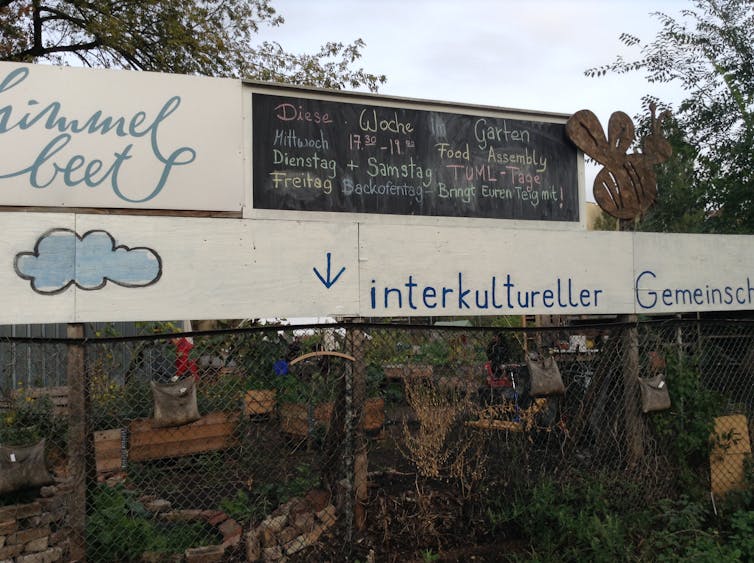
We identified many community gardens which use technology as a tool to organise and spread their shared growing activities. Out of 3,800 initiatives in the database, around a quarter involve shared growing, although their distribution varies from city to city. Our research suggests permanent growing gardens across the city should be developed as a form of social and environmental prescription. This is not hard to do – local governments protect parks all the time – but it requires officials to recognise the value of growing together.
Sharing food, Singapore style
Technology is also being harnessed to enable eating food more communally, acting as an antidote to the industry-encouraged trend towards solo eating on the go. This new wave of food sharing start ups are a range of peer-to-peer dining applications and platforms that offer food experiences to those who want to share their passion for cooking and eating. These food sharing experiences often build on local food flavours, secret recipes and eating within the intimate space of a stranger’s home – ranging from supper clubs to cooking classes to ad hoc soup kitchens.
In Singapore, sharing food has always been part of community, providing a sense of rhythm, friendship and social belonging. Eating is commonly agreed to be a national passion. Often described as a food paradise, the city’s food landscape is shaped by diverse culinary practices and cuisines, including Chinese, Eurasian, Indian, Malay and Peranakan traditions. Such dishes can be found within hawker centres – basically down-to-earth food courts offering diverse and reasonably priced food – across the city-state.
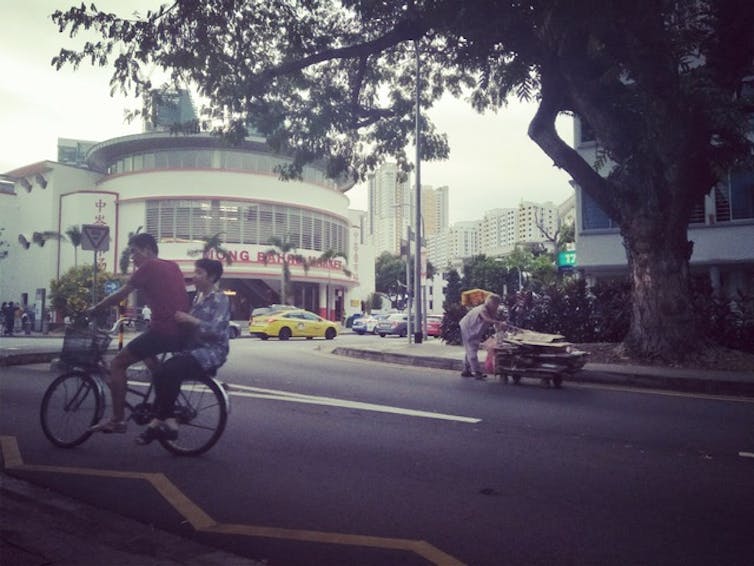
But many traditional hawker fares such as loh kai yik (stewed chicken wings) are becoming increasingly hard to find in the hawker centres. Many Singaporeans feel that today, food is being influenced by fast food cooking styles and consumption of convenience food, weakening hawker traditions.
So, while the city-state has nominated hawker centres for UNESCO Intangible Cultural Heritage to continue practice of food hawking, it is not so common to come together as strangers and sharing meals and cultures, something that shaped Singapore’s gastronomic profile.
But all is not bleak. In response to this trend, an emerging internet-driven food sharing scene in Singapore is now providing other ways to sample, taste and share traditional Singaporean cooking, such as meeting and dining with home chefs through the Share Food App, a platform for sharing and selling home-cooked food.
One person using the app, Elizabeth, grew up with her grandmother, who used to be a hawker. She remembers her grandmother’s ingenious ways of sourcing vegetables from the market, cooking with local ingredients and preparing traditional recipes. Elizabeth spoke to us about her passion for sharing Peranakan food, which combines Chinese and Malay cuisines, and the experience of dining together provided a unique way to explore the culinary history of Singapore. She told us that “food sharing apps such as Share Food have potential to create new food ways that inspire food practices against relentless globalisation of tastes”.
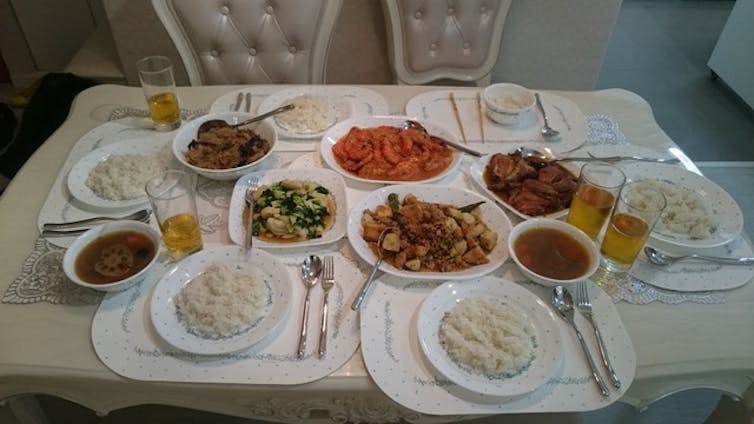
As this demonstrates, technologically enabled food sharing is not only a form of environmental and social activism, these digital tools also enable people to come together through food, and salvage dying cultural traditions and stories.
Sharing futures
These stories of food sharing barely scratch the surface of the food sharing activities we have tracked that are emerging globally. Some initiatives focus on waste, for example, with large platforms such as Olio and Falling Fruit allowing people to access surplus food, while others such as FoodCloud and FareShare connect smaller organisations with large retailers to reduce food waste. Others, such as EatWith, offer the opportunity to dine with people in their homes, connecting people for more personalised food sharing experiences.
What is certain is food sharing has the potential to really change how we think about the sustainability of our food system and the well-being of global populations. Of course, food sharing will not solve all the issues facing our flawed global food system but, at its best, it demonstrates how the food system can and should be designed for people and the planet, rather than just for profit.
If such initiatives are to be a force for change, however, their benefits need to be clear. On the policy level, this means they need to be measurable. And so we have been trying to establish more precisely what kinds of impacts food sharing initiatives are creating. We found that all of the initiatives express either social, economic or environmental goals, but few conducted any formal reporting of impact. This is not surprising; food sharing initiatives have limited time, money and skills available to them to take on such additional tasks. They are often battling just to survive.
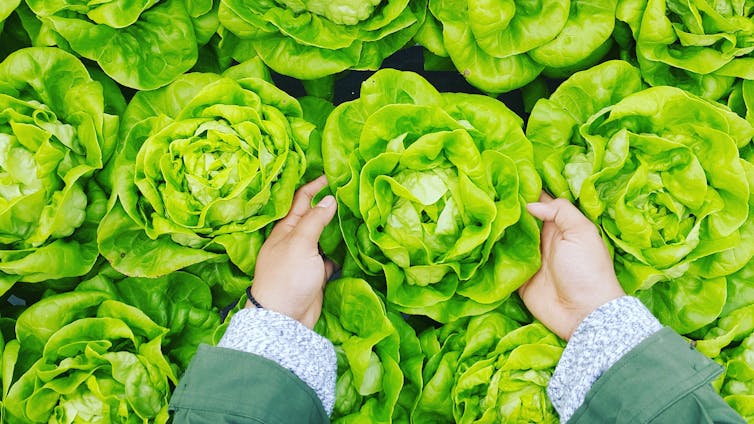
It is relatively easy to count the amount of food produced, consumed or shared. Some surplus food redistribution initiatives, such as FoodCloud, are already doing this very effectively. It is much more difficult to establish how shared experiences make a difference to people in terms of their emotional or social needs. Even here we have some useful indicators. The number of meals people share with others can be an indicator of social capital as seen in the big lunch project.
We worked with initiatives to co-design the free SHARE IT online toolkit to help food sharing initiatives of all kinds to understand and communicate their impacts more clearly. We are providing the resources and online infrastructures, food sharing initiatives just need to find the time to consider the impact they are having on those with whom they share.
Advancing food democracy
Whether food sharing initiatives flourish or fade is not only down to the energies of those who establish and participate in them. Government policies and regulations play an important role in shaping food sharing activities. In a new publication, we document how food sharing initiatives often struggle to gain visibility among policy makers.
Governments tend to see food only as a commodity. They regulate food activities as if they were either solely commercial businesses or entirely private matters. As a result, the social, environmental and health benefits that accrue from food sharing that doesn’t fit neatly in either of these boxes are often missed. The lack of holistic food policy departments, particularly at the local government level, does not help.
These are common challenges across European, Oceanian and North American cities attempting to build sustainable urban food policies. But there are reasons to be optimistic. London, for example, has just launched a new food strategy that seeks to increase the visibility of food matters all around the city.
Meanwhile, actions need not always be state-led. London’s Victoria and Albert Museum is currently hosting an exhibition on food which explores how global issues from climate change and sustainability to workers’ rights interact with the way we produce and consume food. It takes visitors on an experimental journey, including food sharing initiatives we have examined such as Olio and Falling Fruit, asking: “Can what we eat be more sustainable, ethical and delicious?” Slowly, such actions are encouraging more people to think about different ways in which we can produce and can come together around food.

Better together
Thinking outside the box around food is crucial given the challenges we now face in relation to global environmental changes. There is general agreement that our food systems need a dramatic overhaul.
It is sometimes hard to keep positive in the face of social, economic, environmental and political instability. So it is heartening that people are organising in solidarity with others around the most basic of human needs: food. Acting together in this way has been shown to be an empowering way to deal with issues of eco-anxiety. By their very existence, these food sharing initiatives provide a demonstration effect for others. They are, as Jane Riddiford from Global Generation and The Skip Garden and Kitchen initiative puts it, “creating the conditions for change”.
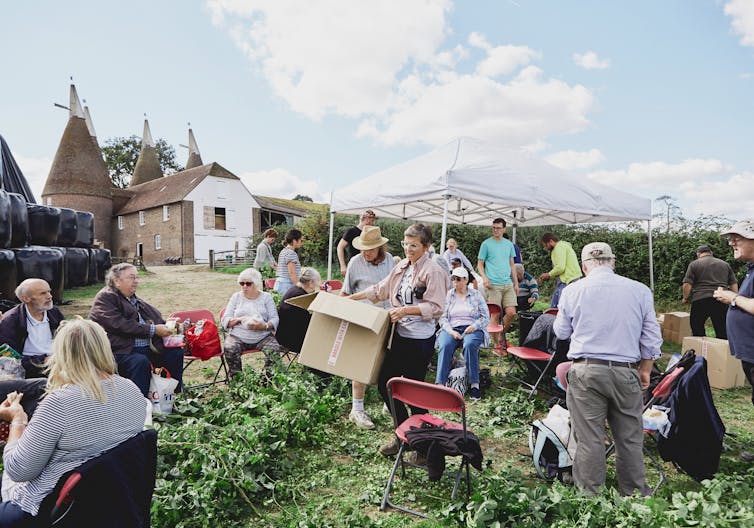
In many cases, initiatives are acting and organising themselves in the face of government inaction rather than because of it. Initiatives plug gaps in emergency food provision and provide opportunities for community groups to bring food into their services in ways that would have been impossible otherwise. They provide actual care in the community as vulnerable and marginalised groups are welcomed into community gardens and participate actively in cultivating both food and interpersonal relationships.
Food sharing initiatives are then to be celebrated for their collective actions contributing towards the sustainable development goals, but this is not enough. The way we govern food needs to change. The current agri-food system has been set up to regulate multinational corporations and private consumers, not support digitally-enhanced community groups and entrepreneurial grassroots start ups set on delivering social, economic and environmental goods and services.
Ultimately, the value of food sharing – and the contribution it makes to physical and mental well-being of individuals, communities and the planet – needs to be made visible. Cultivating widespread food sharing takes a lot of time, labour and care but the social and environmental return on investment is worth it. In these difficult times, cooperation is key to our redemption.

For you: more from our Insights series:
Environmental stress is already causing death – this chaos map shows where
The end of the world: a history of how a silent cosmos led humans to fear the worst
To hear about new Insights articles, join the hundreds of thousands of people who value The Conversation’s evidence-based news. Subscribe to our newsletter.

